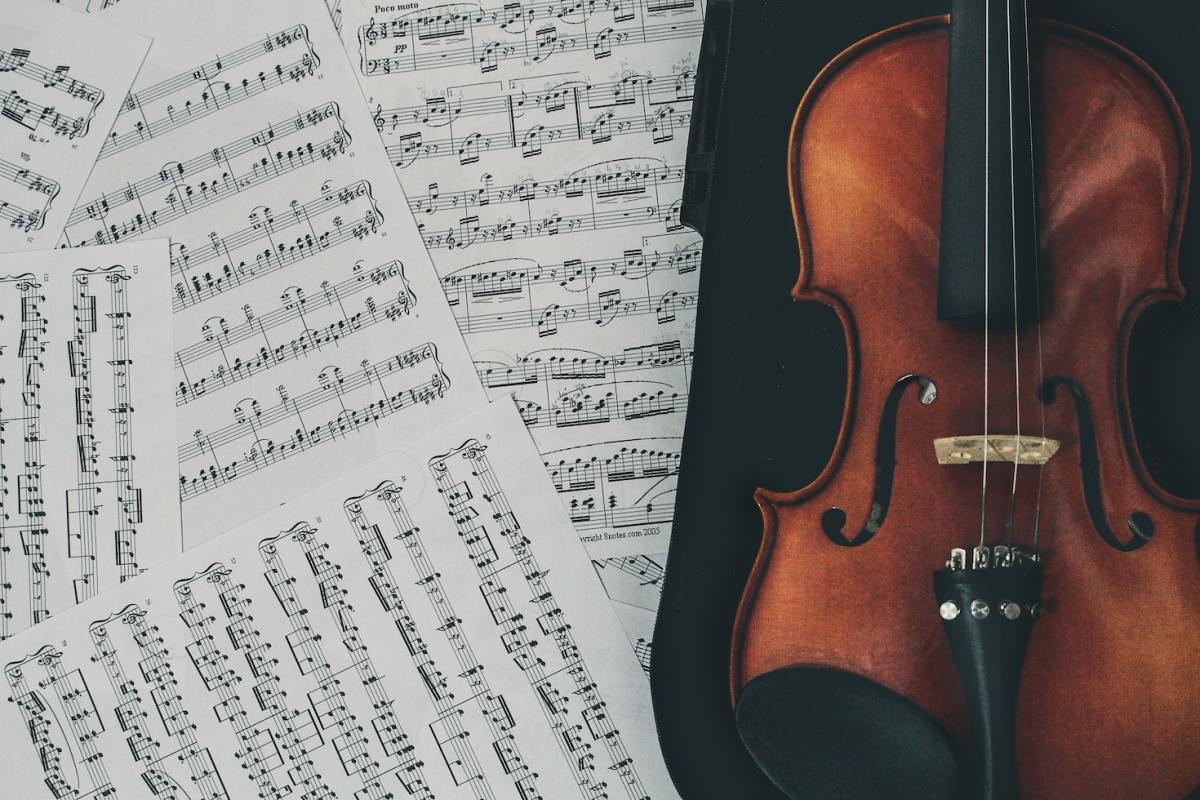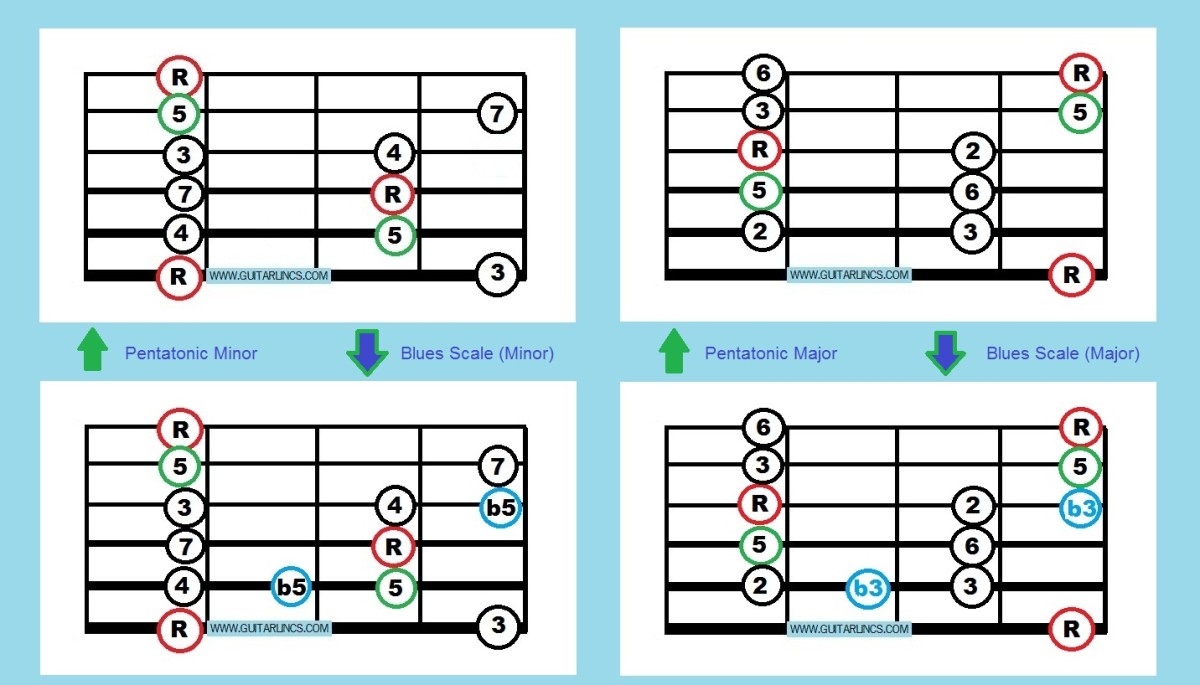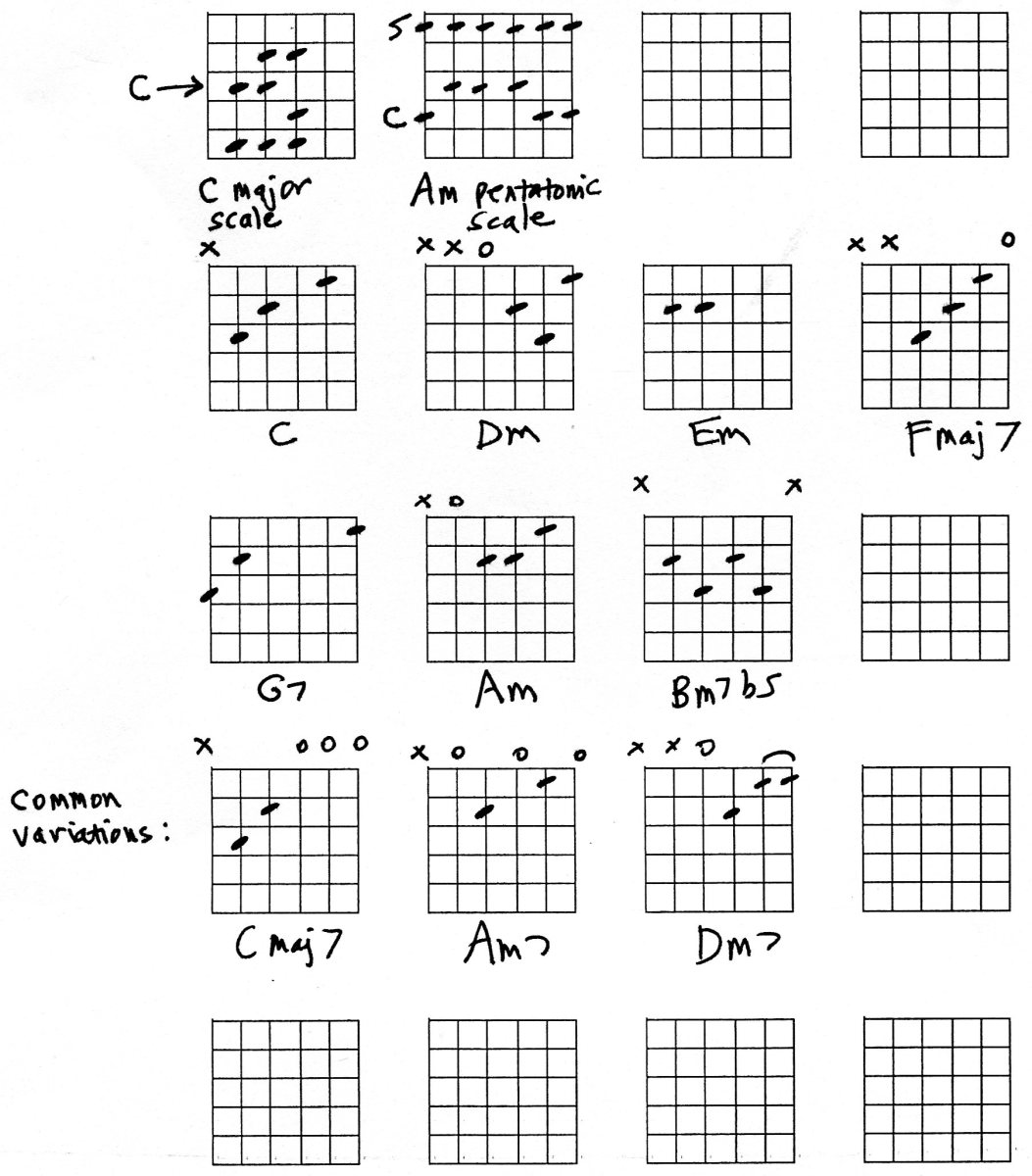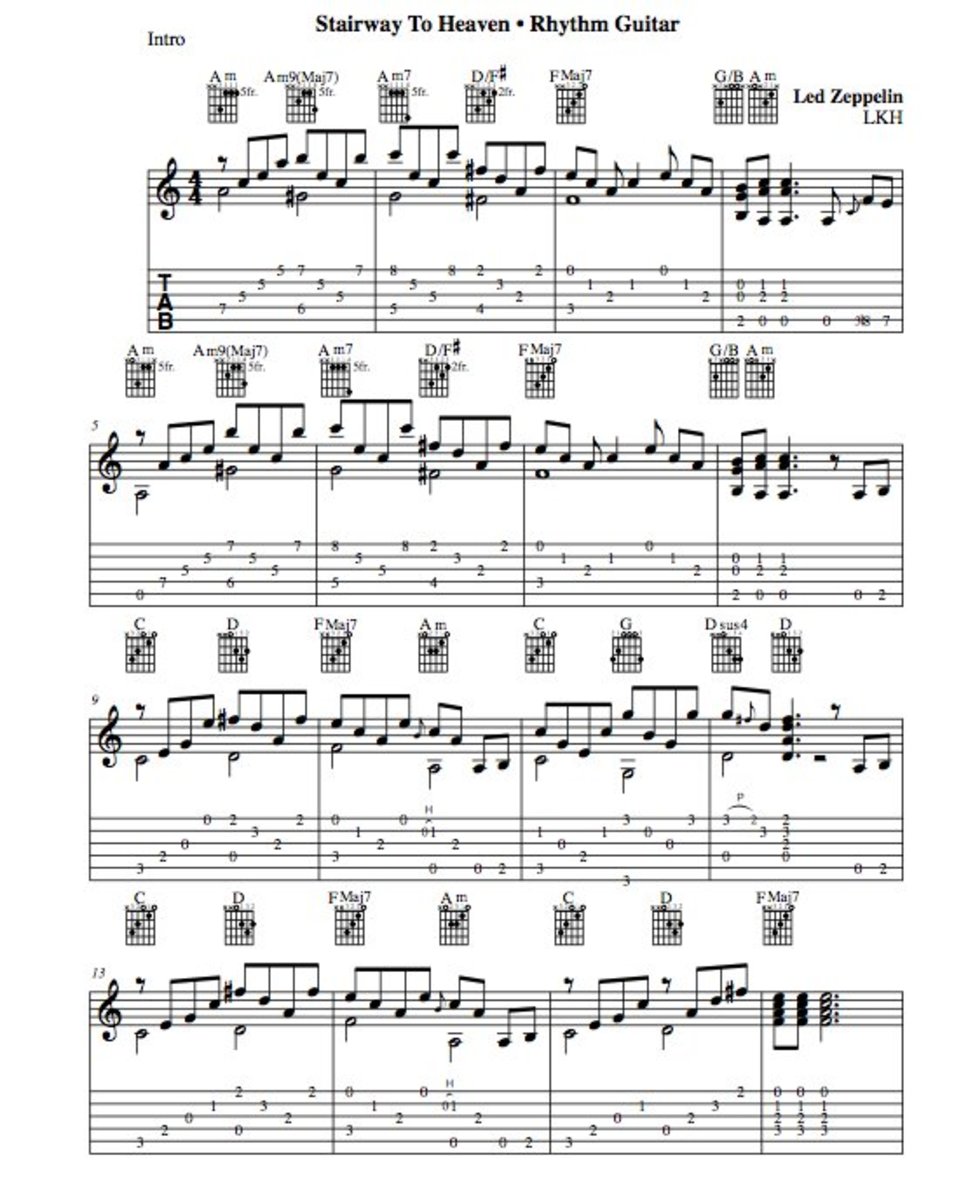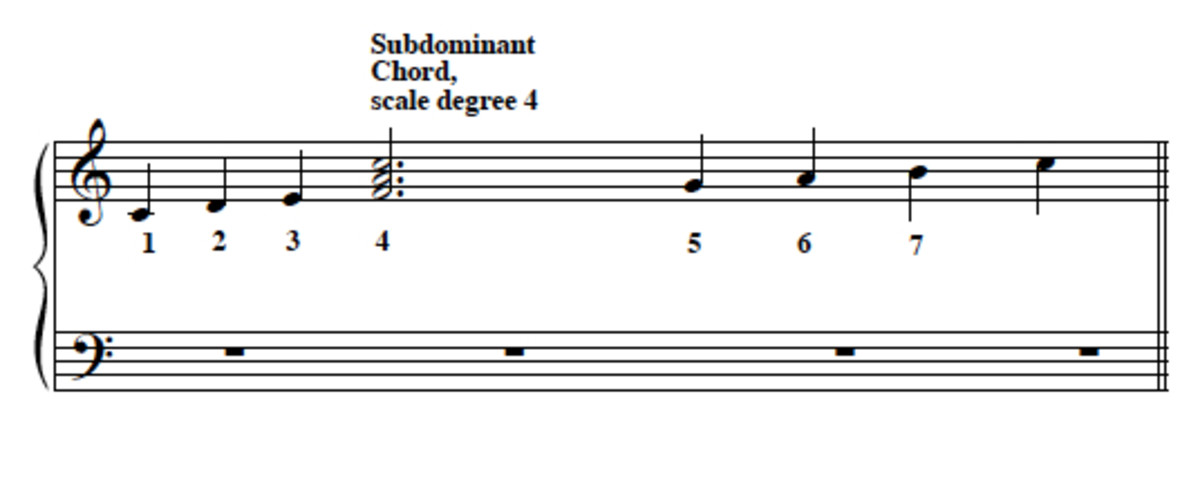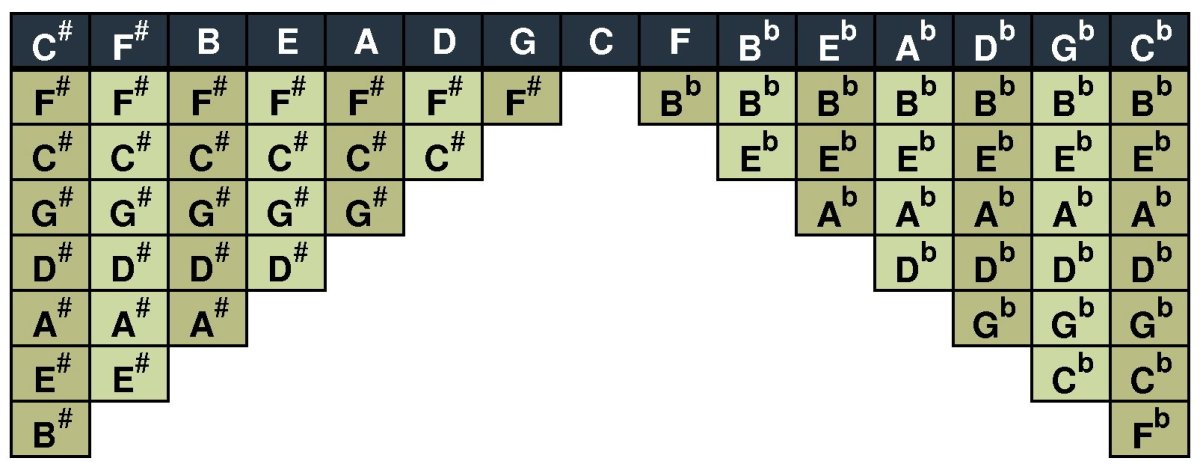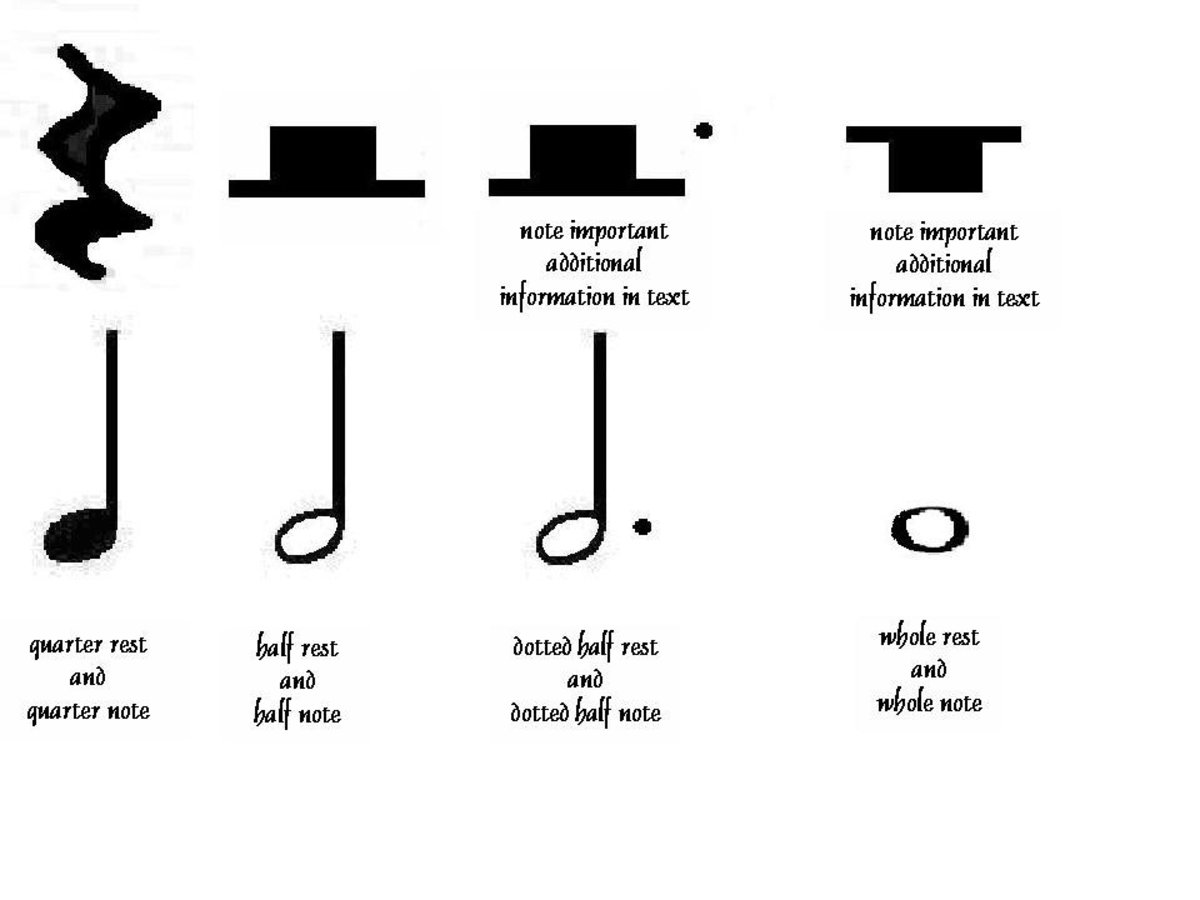Theory - Guitar, Piano
Introduction to music theory
You could fill a book with music theory, and it's a vast subject. However, most of the really useful and practical things can be summarized on a couple of pages of A4. The keyboard diagram shows a lot of this really useful information, and it should help you with understanding any instrument or voice. Guitar players especially can struggle with theory, and it's much easier if it is explained through the piano keyboard.
Another hub which might be helpful for guitar players is Guitar Theory - Chords in C.
Piano keyboard and guitar chord pictures
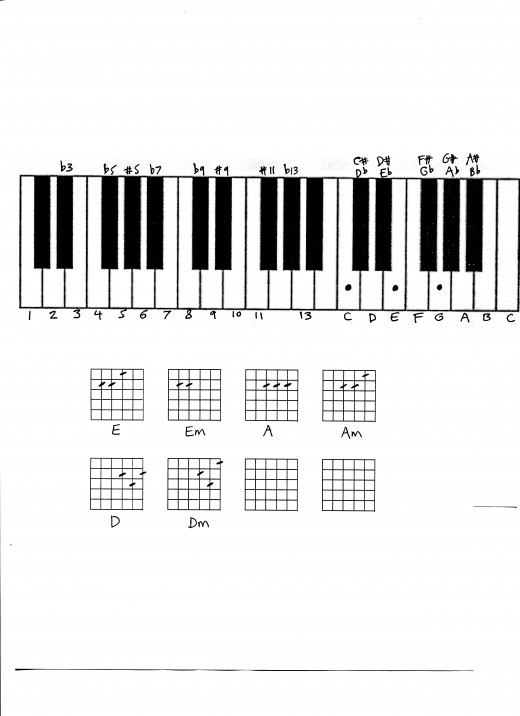
What the numbers mean
Numbers in chord names are referring to intervals, the distance between the starting note of the relevant major scale and the added note. It's that simple, although there is a bit of hidden code involved.
An important reason for the use of numbers instead of letters is that everything can be transferred to different keys with considerably less effort. To the right hand side of the diagram, the alphabetic note names are given - all this relates to the key of C.
- 1 and 8 are the same note, an octave apart
- Larger intervals (starting with 9) are shown
- There is no 12 or 14 note. That's just the way it is.
- Note 9 and note 2 are the same thing, and 6 and 13 are the same too. The higher numbers just imply they are in the higher octave.
- The black keys have two alphabetic names. Sorry. They are either flats or sharps, which depends on the key signature of the music, but in practice it doesn't matter much which name you give them.
Chord examples
If you play C E and G you have a C major chord, usually called C for short. The three dots on the diagram show this chord. If you move this pattern along to the right, one step at a time, you can form all the chords in the key of C, which are:
C Dm Em F G Am Bdim C. Pictures are in my piano lesson hubs.
This is called the harmonised scale of C, and it's beyond useful! For example, Dm would be the notes D, F, and A. Virtually all songs are based on this sequence of chords. In every major key the sequence is
I IV and V = major
ii iii and vi are minor
vii is a dim or m7b5
Another way to describe the C major chord would be in intervals. Now we can get a long way, very fast. Any major chord is 1, 3, 5 and any minor chord is 1, b3, 5.
- major 7 chords are 1, 3, 5, 7
- 7th chords are 1, 3, 5, b7
- 6th chords are 1, 3, 5, 6
- 9th chords are 1, 3, 5, b7, 9
Major to minor
To change any chord from major to minor, just flatten the third. So the formula changes from 1, 3, 5 to 1, b3, 5. In terms of scales, it's the flat 3rd that makes it sound like a minor scale.
Guitar chord pictures show this major to minor move - you can see that only one note changes, by one fret.
Playing in other keys
All this info has been focused on the key of C, as it's just the easiest place to start. All the other keys have the same chord structures and the same interval naming.
- The key of D is two notes up from C. So all the chords and the major scale move up two notes, keeping exactly the same pattern.
- C chord is C E G, so D chord is D F♯ A
Learning tips
For guitar players, it would be a very good idea to buy a keyboard if you don't already have one. You don't need anything fancy, and you don't even need to be able to play well to understand the theory, which is like the building blocks of music. You can learn all this material on an i-Pad or a printout while waiting for the train, etc. I'll try and answer any questions through the comments box below.

